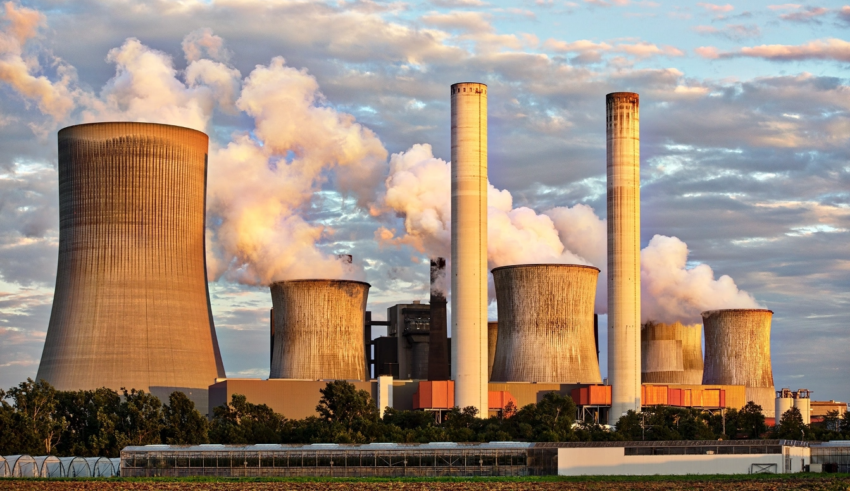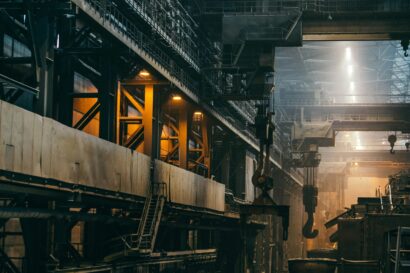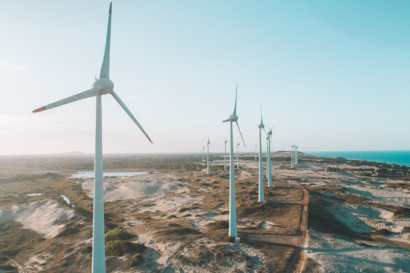AG INSIGHT | 15/04/2019
Net zero – rethinking carbon as both a challenge and an opportunity

Jon Khoo, Regional Sustainability Manager (UKIME & Nordics) at Interface, explores how Interface is rethinking its relationship with carbon.
Climate change is the biggest challenge that humanity faces, but it also represents an opportunity for governments, society and business. Since the industrial revolution, society has emitted vast amounts of greenhouse gas emissions and put so much carbon into the atmosphere, that we have created an imbalance that damages our environment and affects human health.
To address this issue and begin to replenish the environment, organisations must look at how to drawdown excess carbon to capture, store it and use it as a resource.
The future is now to commit to net zero business. There is greater societal awareness around climate change and this is leading to a revolution where customers are expecting business and government to drive change that mirrors the adaptations they are making in their own lives. Innovative business leaders are setting net zero targets and, as at March 2019, over 539 companies globally are taking science-based climate action.
Carbon neutral products and services
When purchasing products and services, it is becoming easier to make the right decision based on a lower carbon footprint. Whether a consumer or a business, you can buy carbon neutral products and services for no extra cost or for a small surcharge. You take carbon neutral shared rides with Lyft, zero out your emissions on a flight with ANA or send a package with UPS choosing to offset your impact.
In the built environment, the RE100 has seen 166 businesses commit to 100% renewable energy, representing a significant effort by some of the largest companies in the world to tackle operational carbon.
Interface has also been looking at embodied carbon, and has ensured that all of its products are now carbon neutral. This was achieved through working to reduce the carbon footprint of its products through redesign, adopting renewable energy and reducing greenhouse-gas emissions in its facilities. This resulted in a 60 per cent reduction in the carbon footprint of its products. For the remainder, the company invests in carbon offset projects supporting reforestation, clean energy and promoting sustainable fuel sources.
Supporting nature’s ability to sequester carbon
The traditional view of industry and carbon emissions is one of a factory billowing out greenhouse gases. But what if it were possible to invert this? To make a factory behave more like a forest?
Thermosmart, a group of environmental entrepreneurs in Mexico City, are working on mimicking the circulatory systems from animals to help develop heating, ventilation and cooling systems for buildings that harvest waste heat and return it into the system. Using nature to develop a low cost, low energy and low carbon way to make building more efficient.
Interface is looking to use biomimicry to learn lessons from high performing ecosystems and use these to improve its factories. There are two pilot projects, in the US and in Australia, which attempt to replicate the natural conditions of the environment in which that factory has been built, so the factory essentially functions as a forest having a restorative impact. Take water for example, if the nearby ecosystem played a role in water purification, the factory may be redesigned to encourage behavioural changes in water usage, purify the water through wetlands and roof gardens, catch the water, innovatively managing the effluent of the facility, etc. In this way, the manufacturing process can have net zero environmental impact.
Carbon negative materials
A carbon negative material stores more carbon that is emitted during its production. Once achieved, this allows carbon to be reimagined as a resource.
We are seeing the emergence of carbon negative materials, that act as carbon sinks. Carbon8 uses a revolutionary process that combines waste CO2 and thermal waste to create a carbon-negative aggregate that is then used to create the construction materials. While energy is used in the process, the amount of CO2 captured exceeds the amount generated through manufacture, meaning that this is a carbon negative process.
In 2017, Interface showcased its ‘Proof Positive’ carpet tile that used plant derived materials that were efficient at locking in carbon to create a product that sequestered 2kg of carbon per square metre. We are now able to offer a carbon negative backing option and are working toward developing a carbon negative floor.
If this approach was applied more widely across manufacturing and the built environment, it raises the possibility of carbon negative interiors and buildings – playing a role in creating carbon neutral cities.
It’s time for us to rethink our relationship with carbon. To achieve a net zero world, we’ll need to transform perceptions on carbon, to see the opportunity it presents.
Jon Khoo is Regional Sustainability Manager (UKIME & Nordics) at Interface



